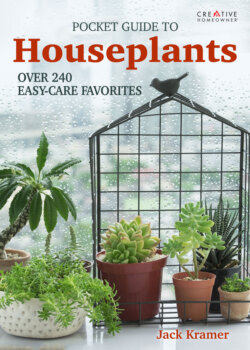Читать книгу Stitching Pathways - Jack Kramer - Страница 11
На сайте Литреса книга снята с продажи.
Focus on Form
ОглавлениеOne of the most important design qualities of a houseplant is its form, or shape. For example, plants such as schefflera often have a canopy shape. Other plants may appear fountain-like, rounded, rosette-shaped, or trailing. Leaves can be oval, round, elliptical, lance-shaped, straplike, or delicate and feathery. You can achieve spectacular results if you use one form to echo another in a room—by placing a tall, arching palm in front of a tall, arching window, for example.
The vertical sansevieria breaks up the strong horizontal lines of the window and container.
Yet a contrast of dissimilar forms can be equally pleasing, such as a columnar cactus against the horizontal lines of walls and furnishings. You need to decide where and when you want such accents. Tall, columnar houseplants can serve as bold sculptures—aralias (Polyscias) are among the best plants for this effect. Other good vertical plants include palms, dieffenbachias, tall dracaenas, weeping fig, and columnar cacti.
The characteristic growth pattern of a plant is called its habit. Houseplant habits are generally classified as shrublike, treelike, fountain-shaped, canopy-like, rosette-shaped, or cascading. For the best visual effect in a room, try to select plants with lines that will contrast with the dominant lines of the room. Thus, to soften the hard lines of a room, use fountain-shaped or canopy-like plants. Or if you prefer, exaggerate the linear space of such a room using large, vertical, treelike plants. Of course, always keep in mind your home’s space restrictions. Avoid overwhelming a room with too many plants or with specimens that are too large for it. Otherwise, the space will feel crowded, even junglelike.
Sizes, shapes, and textures are carefully blended here, creating a pleasing harmony of green.
